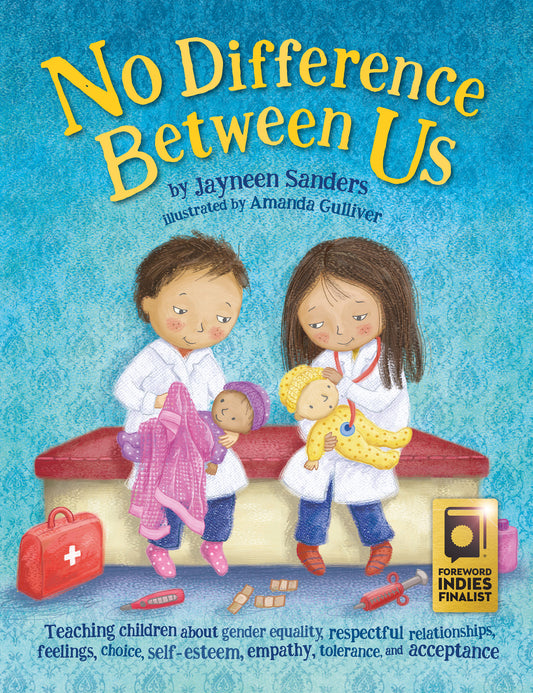As classroom teachers we have an ideal opportunity to encourage gender equality and respectful relationships in our classroom through very simple but effective practices. Research tells us in order to reduce gender-based violence we need to teach these skills to children from the earliest of years. Our differences make us unique but it is our ‘sameness’ that makes us human. The message we have the opportunity to promote in our classroom is that no matter what gender we are, we all have hopes and dreams, and we all need to treat each other with respect and dignity. No gender is ‘better’ than the other or more ‘powerful’. Every person has the right to meet their full potential. By setting up a more ‘gender-neutral’ classroom we are at the forefront of breaking down social norms that promote gender inequality and gender-based violence.
1. Use gender-neutral language when referring to children, e.g. instead of saying, ‘Choose a boy to go with you’; say, ‘Choose a friend to go with you’. Similarly, avoid organizing children according to gender, e.g. ‘Boys line up here and girls here.’ This only reinforces gender segregation.
2. Avoid stereotyping children, e.g. boys are noisy and loud, girls are calm and sweet; boys show less emotion and girls cry more readily. Note that these often-subconscious assumptions will affect your behavior and expectations towards the children.
3. Self-regulate your own interaction with the children. We tend to comfort girls more and send boys on their way earlier. Encourage all children to share feelings and emotions equally.
4. Jumble together all the dress-ups, toys, games, blocks, etc. so all genders have an equal opportunity to use the equipment rather than the girls traditionally drifting towards the dress-ups and the boys towards the blocks.
5. Provide a wide range of diverse stories about the genders in non-stereotyped roles. If such books are limited, change ‘he’ to ‘she’ in some books so the girls have a leadership role.
6. When reading books where typically the tiger or bear is a ‘him’ and the butterfly or bird is a ‘she’, change the gender around. Alternatively, use the gender-neutral terms, ‘they’ or ‘them’.
7. Try not to assign classroom tasks that traditionally relate to a specific gender, e.g. boys moving desks or taking out the bins, while girls are asked to tidy up the dress-up corner.
8. Some children will come to school with preconceived ideas about gender. If a child does say, for example, ‘Marnie can’t play because it's a boy’s game.’ Use that as a ‘teachable moment’ and unpack how the comment made Marnie feel, and why you don’t have any gender-specific tasks in the classroom.
9. Ask children to draw their idea of a fire-fighter, police officer and nurse. Then invite a female fire-fighter and police officer, and a male nurse into the classroom. Invite them to talk about their jobs and unpack the children’s drawings and expectations about the visitors. Always use non-gender specific terms when referring to occupations, e.g. chairperson, flight attendant.
10. Encourage the school staff to devise a gender-equality policy that promotes gender-neutral language and encourages non-traditional gender roles and activities.
11. Hold a parent night to unpack your classroom/school’s policy on gender equality and the use of gender-neutral language. Many parents will find this challenging so it is best to explain the reason behind the decision, i.e. all genders have the right to equal opportunities.
12. Be inclusive of a child/children who identifies as another gender to the one they were assigned at birth. Refer to the child in the gender they prefer. Your modelling of how this child is included and referred to will be paramount to the attitudes of the other children and their families.
Finally, as teachers we have an amazing opportunity to model gender equality in our classrooms. We are preparing children for a changing world where traditional ways of thinking about male and female roles will no longer exist. The use of gender-specific language is most often bias towards masculine words, which only reinforces gender stereotyping and a gender-power imbalance. Therefore, the language the children hear in our classrooms and the opportunities they are presented with will affect their interests, activities and eventually careers. In years to come, I hope that ensuring we have a classroom where gender equality is promoted is no longer needed—simply because gender inequality no longer exists!
Jayneen Sanders (aka Jay Dale) is a teacher, author, mother of three daughters and an active advocate for sexual abuse prevention education and respectful relationships to be taught both in the home and in schools.
For more information on this topic and Jay’s children's books go to e2epublishing.info
All books are also available on Amazon at https://www.amazon.com/s/ref=nb_sb_noss_2?url=search-alias%3Dstripbooks&field-keywords=jayneen+sanders






